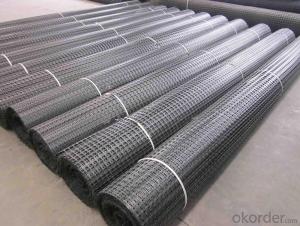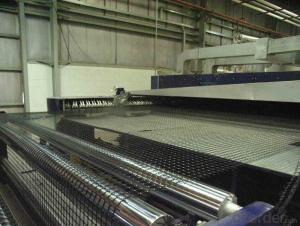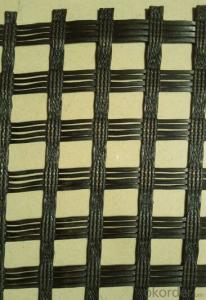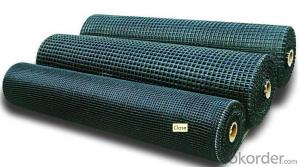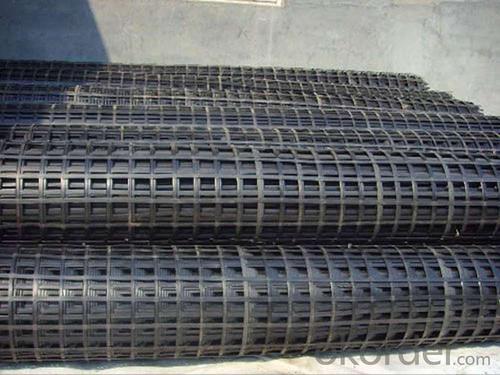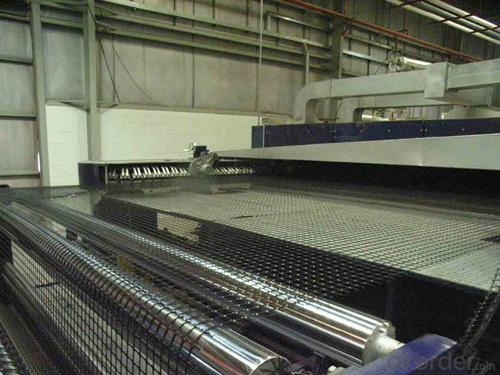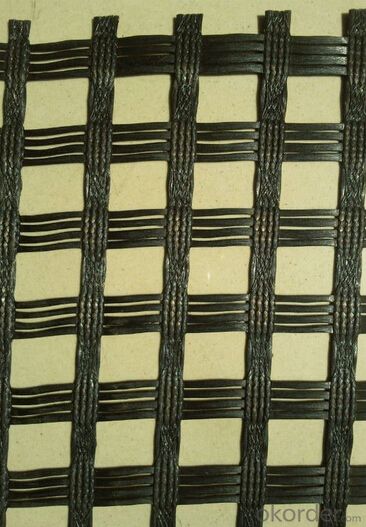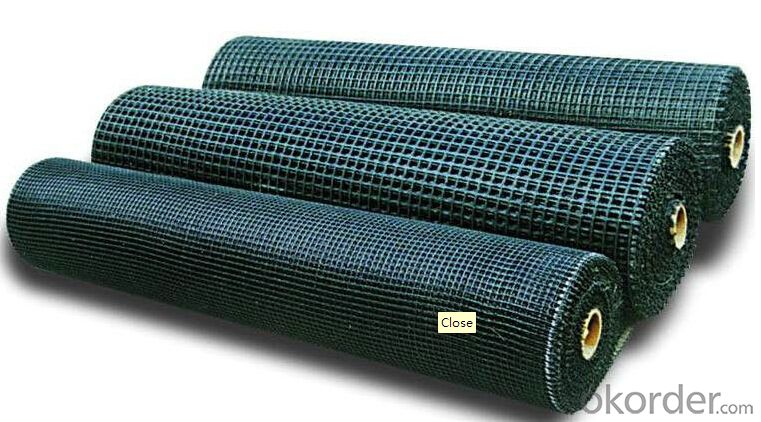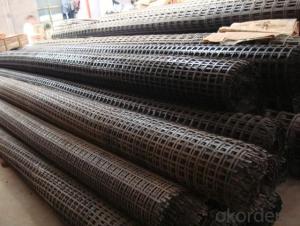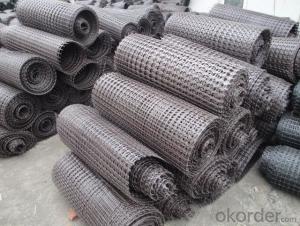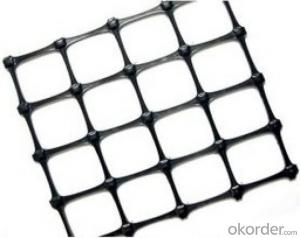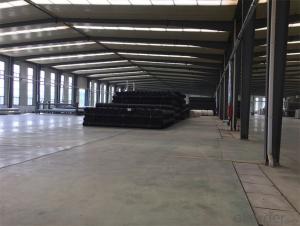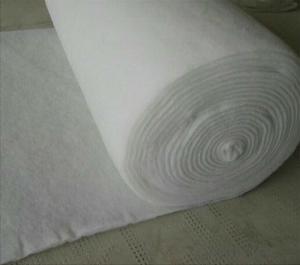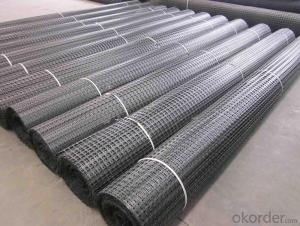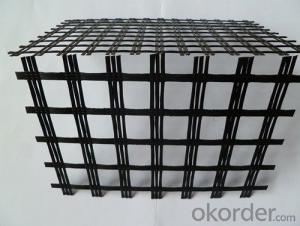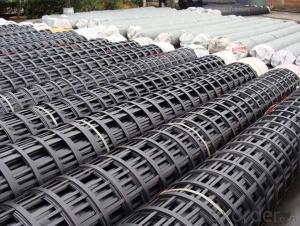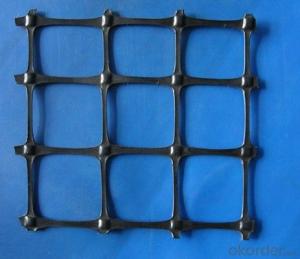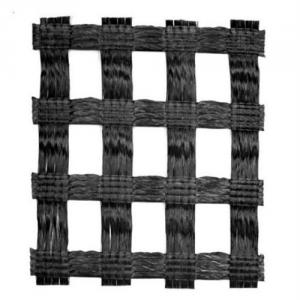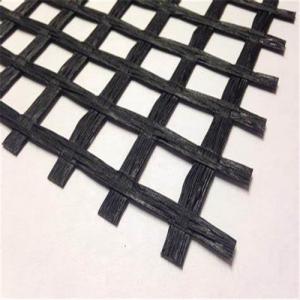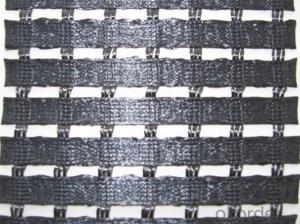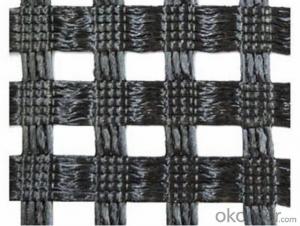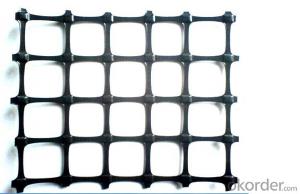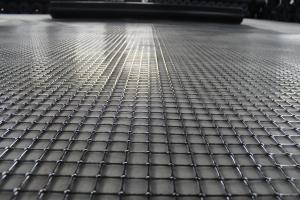Polyester Woven Geogrids for Airport Infrastructure Construction - Fiberglass Geogrid Manufacturer
- Loading Port:
- Qingdao
- Payment Terms:
- TT OR LC
- Min Order Qty:
- 50000 m²
- Supply Capability:
- 2000000 m²/month
OKorder Service Pledge
OKorder Financial Service
You Might Also Like
Fiberglass Geogrid Manufacturer for Airport Infrastructure Construction
Description Of Fiberglass Geogrid Manufacturer for Airport Infrastructure Construction:
Fiberglass geogrid is a kind of new favorable earthwork base material to strengthen the road surface and roadbed.This product is made by weaving and covering fiberglass filament. It is featured by high vertical and horizontal tensile strength, low unit extension, high flexibility, and favorable high and low temperature resistance.The products after surface covering own the favorable property of alkali resistance and aging resistance. It is used widely to increase the asphalt road surface, concrete road and roadbed (both soft and hard road surfaces). Compared with the traditional road surface, it reduces the cost, prolong the service life, and avoid the reflection road crackle. This product is also used to strengthen the soft land, such as railway, airport, irrigation work, and dyke, etc, and the roadbed.
Main Features of Fiberglass Geogrid Manufacturer for Airport Infrastructure Construction:
1.High tensile strength, low elongation.
2.No long-term creep: the product can keep for a long time performance.
3.Thermal stability: fiber glass melting temperature above 1000 ℃.
4.The compatibility with asphalt.
5.Physical and chemical stability.
Specifications of Fiberglass Geogrid Manufacturer for Airport Infrastructure Construction:
Tensile Strength (KN) | Warp | >30 | >50 | >60 | >80 | >100 | >120 | >150 | >200 |
Weft | >30 | >50 | >60 | >80 | >100 | >120 | >150 | >120 | |
Elongation(%) | <4< p=""> | <4< p=""> | <4< p=""> | <4< p=""> | <4< p=""> | <4< p=""> | <4< p=""> | <4< p=""> | |
Mesh Size(mm) | 25.4*25.4 | 25.4*25.4 | 25.4*25.4 | 25.4*25.4 | 25.4*25.4 | 25.4*25.4 | 25.4*25.4 | 25.4*25.4 | |
Elastic Modulus | 76 | 76 | 76 | 76 | 76 | 76 | 76 | 76 | |
Width(m) | 1~6 | 1~6 | 1~6 | 1~6 | 1~6 | 1~6 | 1~6 | 1~6 | |
Length(m) | 50~300 | 50~300 | 50~300 | 50~300 | 50~300 | 50~300 | 50~300 | 50~300 | |
Temperature Resistant(℃) | -100~280 | -100~280 | -100~280 | -100~280 | -100~280 | -100~280 | -100~280 | -100~280 | |
Resin Content (%) | 18~20 | 18~20 | 18~20 | 18~20 | 18~20 | 18~20 | 18~20 | 18~20 | |
Glue Type | Bitumen PVC SBR soakage | Bitumen PVC SBR soakage | Bitumen PVC SBR soakage | Bitumen PVC SBR soakage | Bitumen PVC SBR soakage | Bitumen PVC SBR soakage | Bitumen PVC SBR soakage | Bitumen PVC SBR soakage | |
Applications of Fiberglass Geogrid Manufacturer for Airport Infrastructure Construction:
Strengthen bitumen concrete roadway and reduce and prevent various kinds of reflection gaps on roadway.
1. Maintenance of old asphalt road reinforcement of asphalt pavement.
2. Converting old cement concrete road into composite road.
3. Restraining reflection cracking caused by block shrinkage.
4. Preventing and controlling the cracking caused by new and old combination and uneven settlement.
5. Road extension.
6. Reinforcement of soft soil foundation and overall strength of roadbed.
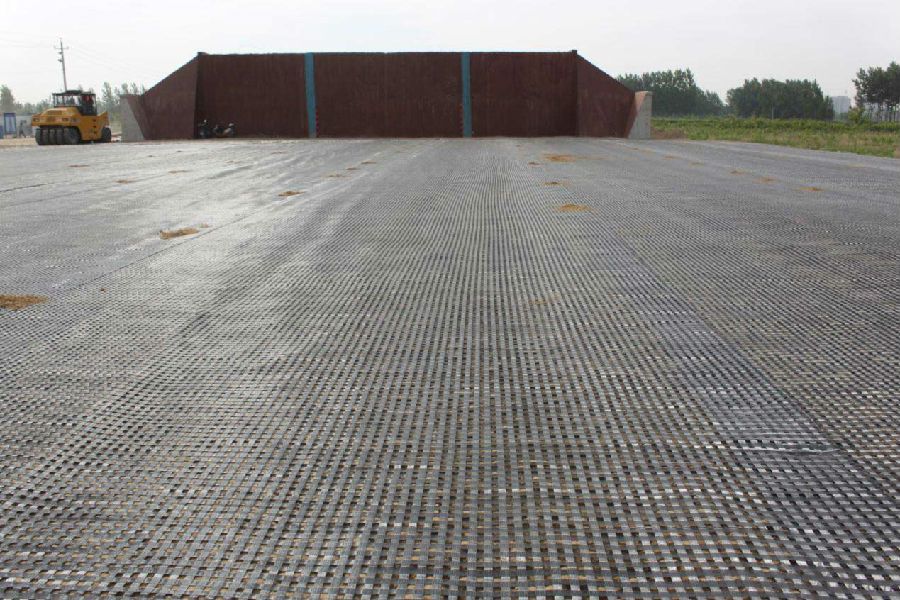
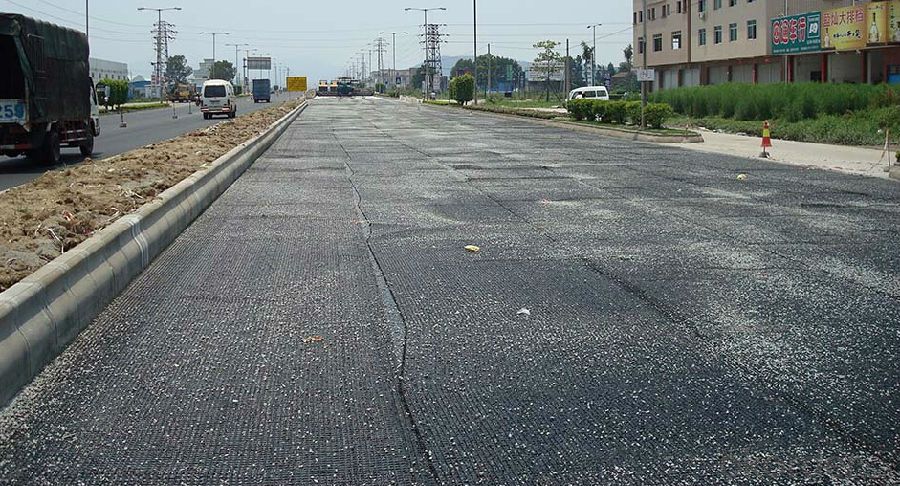
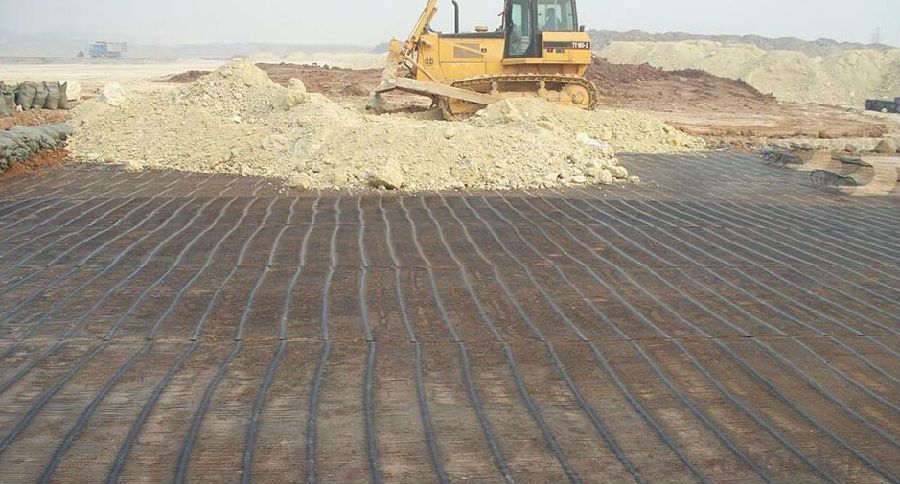
IMages of Fiberglass Geogrid Manufacturer for Airport Infrastructure Construction:

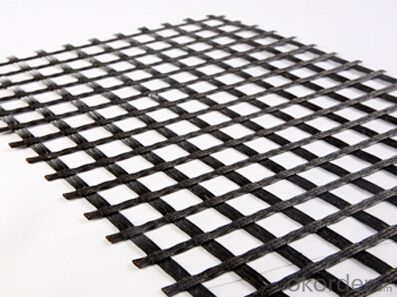
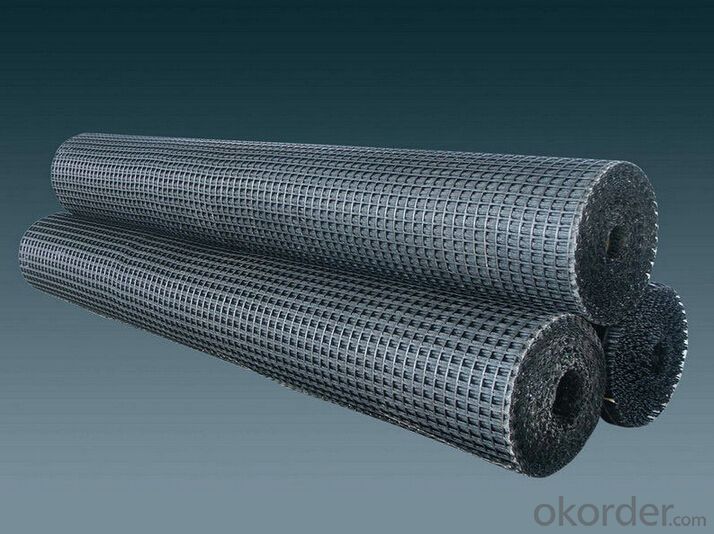
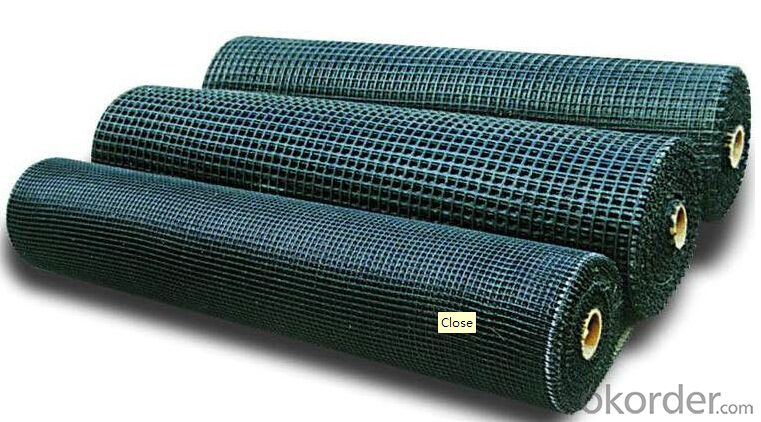

FAQ of Fiberglass Geogrid Manufacturer for Airport Infrastructure Construction:
1. What are we supplying?
We are specialized in producing Geosynthetic materials, like Geogrid Series, HDPE Geocell, Geonet, Geotextile, Geomat, Tri Denmensional Composite Grainage Geonet, and Geomembrane Series.
.
2. How Many years experience do we have?
We have been exported to more than 20 countries in the past 15 years.
3. How long do we usually reply your request?
We always reply our customer within 24 hours.
- Q: Are there any limitations or drawbacks of using geogrids?
- Yes, there are some limitations and drawbacks of using geogrids. One limitation is that geogrids can be relatively expensive compared to other soil stabilization methods. Additionally, the installation process of geogrids can be time-consuming and requires skilled labor. Another drawback is that geogrids are not suitable for all types of soil and geological conditions. They may not be as effective in cohesive soils or in areas with high water table levels. Moreover, geogrids have a limited lifespan and may require regular maintenance or replacement over time.
- Q: Are geogrids effective in stabilizing dredged material containment areas?
- Yes, geogrids are effective in stabilizing dredged material containment areas. Geogrids provide reinforcement and stability to the soil, preventing erosion and maintaining the containment of dredged material. They help distribute loads and reduce settlement, ensuring long-term stability and containment of the dredged material.
- Q: Are geogrids resistant to aging?
- Yes, geogrids are generally resistant to aging. They are designed to withstand long-term exposure to environmental factors such as UV radiation, chemicals, and temperature variations, ensuring their durability and longevity.
- Q: How do geogrids help in reducing the risk of differential settlement of structures?
- Geogrids help in reducing the risk of differential settlement of structures by providing reinforcement and improving the load-bearing capacity of the soil. They act as a stabilizing layer, distributing vertical and horizontal forces evenly, which prevents uneven settling of the foundation. This helps maintain the structural integrity of the building and minimizes the potential for damage or structural failure.
- Q: Can geogrids be used in stormwater detention systems?
- Yes, geogrids can be used in stormwater detention systems. Geogrids are often used to reinforce the soil and provide stability in these systems, helping to prevent erosion and maintain the structural integrity of the detention system.
- Q: What is the difference between Geogrid TGSG and GSL?
- TGSG is the national standard GB/T17689-2008 double plastic geogrid code
- Q: What are the factors that affect the cost-effectiveness of geogrid-reinforced structures?
- There are several factors that can affect the cost-effectiveness of geogrid-reinforced structures. Firstly, the type and quality of the geogrid material used can significantly impact the overall cost. Higher-quality geogrids may initially be more expensive but offer better long-term performance, potentially reducing maintenance and repair costs over time. Additionally, the design and engineering of the structure play a crucial role. Properly designed geogrid-reinforced structures can optimize material usage and minimize construction costs. The expertise and experience of the engineers and contractors involved also contribute to the cost-effectiveness, as their knowledge can help avoid unnecessary expenses and ensure efficient construction. The specific site conditions, such as soil characteristics and slope stability, are also important factors. Geogrids are typically used to enhance soil stability, so the suitability of the soil for reinforcement and the extent of reinforcement required can impact costs. Difficult terrain, challenging access, or the need for additional site preparation can also increase costs. Lastly, the lifespan and durability of geogrid-reinforced structures should be considered. While geogrids are designed to be long-lasting, factors like environmental conditions, loading requirements, and proper installation can affect their performance. Investing in high-quality materials and proper installation methods may initially increase costs but can result in longer service life and reduced maintenance expenses in the long run.
- Q: Can geogrids be used in railway track bed stabilization?
- Yes, geogrids can be used in railway track bed stabilization. Geogrids are commonly used in civil engineering projects to reinforce soil and provide stability. In the case of railway track bed stabilization, geogrids can be installed to improve the stability and strength of the track bed, reducing the risk of settlement and deformation. They help distribute the load and reinforce the subgrade, preventing the track from shifting or sinking.
- Q: How do geogrids improve the stability of mechanically stabilized earth walls?
- Geogrids improve the stability of mechanically stabilized earth walls by providing reinforcement and confinement to the soil. They increase the tensile strength of the wall system, redistributing applied loads and preventing excessive deformation. The geogrids also enhance the overall stability by minimizing soil erosion and promoting better compaction, resulting in a more robust and durable structure.
- Q: Can geogrids be used in subgrade stabilization?
- Yes, geogrids can be used in subgrade stabilization. Geogrids are commonly employed in civil engineering projects to enhance the stability of subgrade soils. They provide reinforcement and distribute loads, reducing the potential for soil movement and settlement. Geogrids are effective in improving the strength and load-bearing capacity of subgrade soils, making them suitable for subgrade stabilization applications.
Send your message to us
Polyester Woven Geogrids for Airport Infrastructure Construction - Fiberglass Geogrid Manufacturer
- Loading Port:
- Qingdao
- Payment Terms:
- TT OR LC
- Min Order Qty:
- 50000 m²
- Supply Capability:
- 2000000 m²/month
OKorder Service Pledge
OKorder Financial Service
Similar products
Hot products
Hot Searches
Related keywords

